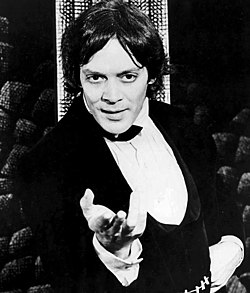
Since the premiere of the children's television program Sesame Street on November 10, 1969, it has included what writer Malcolm Gladwell has called "the essence of Sesame Street—the artful blend of fluffy monsters and earnest adults". [1] The original cast, chosen by original producer Jon Stone, consisted of four human actors—Matt Robinson, who played Gordon; Loretta Long, who played Gordon's wife, Susan; Will Lee, who played Mr. Hooper; and Bob McGrath, who played Bob. Unlike most children's television programs at the time, the producers of Sesame Street decided against using a single host and cast a group of ethnically diverse, primarily African American actors/presenters, [2] with, as Sesame Street researcher Gerald S. Lesser put it, "a variety of distinctive and reliable personalities". [3]
Contents
Stone did not audition actors until spring 1969, a few weeks before five shows, designed to test the show's appeal to children and to examine their comprehension of the material, were due to be filmed. Stone videotaped the auditions, and researcher Ed Palmer took them out into the field to test children's reactions. The actors who received the "most enthusiastic thumbs up" were cast. [4] For example, when the children saw Long's audition, they stood up and sang along with her rendition of "I'm a Little Teapot". [4] [5] As Stone said, casting was the only aspect of the show that was "just completely haphazard". [6] Most of the cast and crew found jobs on Sesame Street through personal relationships with Stone and the other producers. [6]
The results of the test shows, which were never intended for broadcast and shown to preschoolers in 60 homes throughout Philadelphia and in day care centers in New York City in July 1969, [6] were "generally very positive". [7] The researchers found that children learned from the shows, that the show's appeal was high, and that children's attention was sustained over the full hour. [6] However, they found that, although children's attention was high during the Muppet segments, their interest wavered when there were only humans on screen. The producers had followed the advice of child psychologists who were concerned that children would be confused, and had recommended that human actors and Muppets not be shown together. As a result of this decision, the appeal of the test episodes was lower than they would have liked, [7] [8] so the show's producers knew they needed to make significant changes, including defying the recommendations of their advisers and show the human and Muppet characters together. Lesser called this decision "a turning point in the history of Sesame Street". [1] Muppet creator Jim Henson and his coworkers created Muppets for Sesame Street that could interact with the human actors, and many segments were re-shot. [1]
The human cast currently consists of Alan, Chris, Nina, Charlie, Mia, Dave and Frank. Though no longer part of the show, longtime cast members Bob, Gordon, Susan, Luis, Maria and Gina have still made special appearances on occasion, in online videos, TV specials and at live appearances. In 2019, retired characters from the series such as Linda, Miles and Leela returned for the TV special Sesame Street's 50th Anniversary Celebration . [9] [10]













